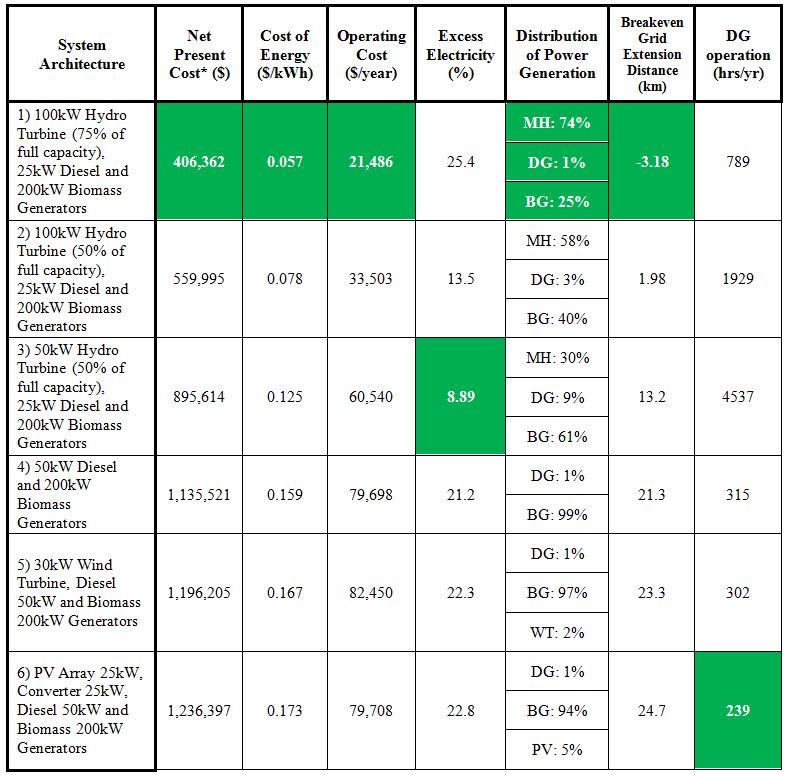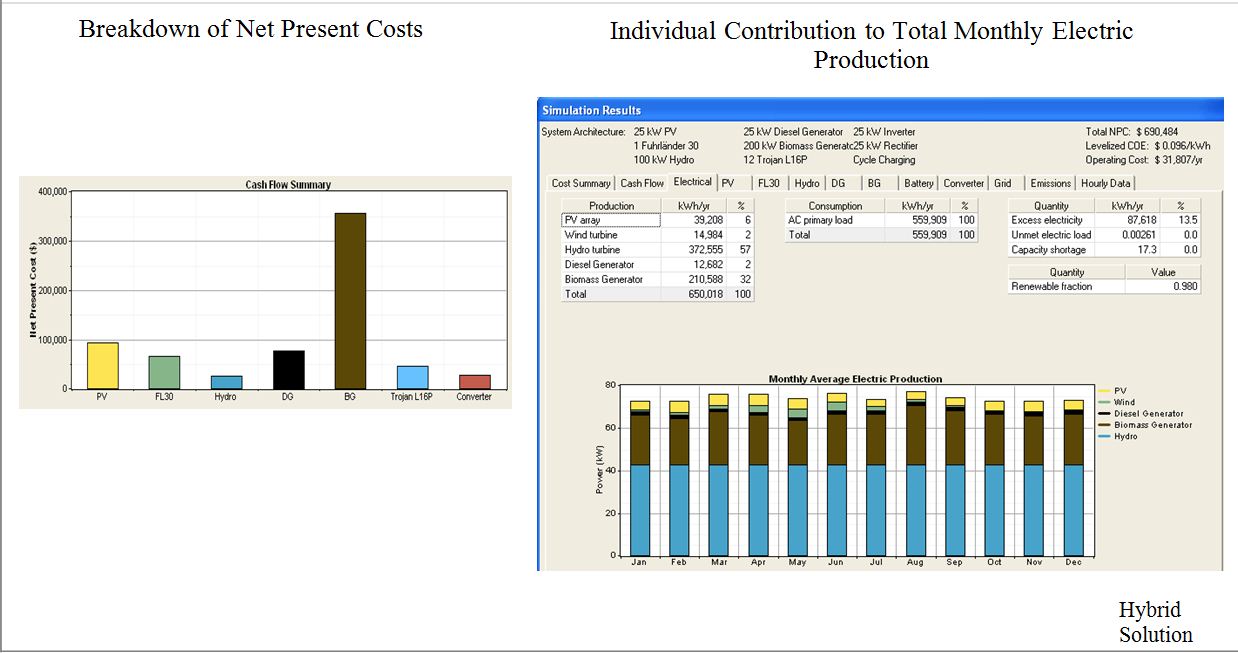Homer Simulations - Results & Conclusion
The following table summarizes simulation results:
 *NPC: Present value of all the costs that the system incurs over its lifetime minus the present value of all the revenue the system earns during its lifetime.
*NPC: Present value of all the costs that the system incurs over its lifetime minus the present value of all the revenue the system earns during its lifetime.
Solution 1
- Hydroelectricity (with capacity at 75% of maximum) provides majority of power, but has the lowest net present cost.
Solution 2

- Assumes hydroelectric generator is used at 50% capacity, on average. This is a more realistic assumption. Nonetheless, micro-hydro provides a significant amount of total power, while costing the least.
Solution 3

- Smaller hydroelectric generator (50kW) at 50% of capacity, on average.
- Biogas generator provides majority; however, micro-hydro is still important.
Solution 4

- Most cost-effective solution, without using hydroelectricity.
- Power derived from biomass provides the overwhelming majority of the total power.
Solution 5

- Most cost-effective solution, using wind power.
- Wind power contributes very little to the overall electricity generation.
- The scope for wind turbines in Bihar is limited, due to low wind speeds.
Solution 6
- Solar has great potential in Bihar.
- Presently contribution is a small fraction of total, however, this could change in the future as capital costs decrease.
Most Cost-Effective Hybrid Solution With All Renewable Sources of Energy
- Breakeven Grid Extension Distance = 6.36km.
- Diversification of energy sources is important; however, in this case, this is not the most cost-effective solution.
- Interestingly, here solar energy provides a greater percentage of total power with 6%, than without hydroelectric power.
Final Remarks
- If micro-hydro is a possibility for a rural community, then they should prioritize this renewable source of energy. Stand-alone systems with micro-hydro turbines are financially viable at very short, if any, distances away.
- In addition, we can see from the simulations that in terms of power generation capacity, the system ranks the renewable sources of energy in the following order: 1) micro-hydro 2) biomass 3) PV and 4) wind turbine. This is not surprising, considering that the wind speeds of the region are quite low at an average of 2.77m/s, whereas solar radiation is in abundance throughout the year. Biomass, such as rice-husk, is also abundant, while micro-hydro costs and reliability are ideal for rural loads.
- However, PV capital costs are currently still too high to become the dominant source of energy for rural areas; although currently in the case study up to 5% of the total power can be generated from PV arrays, in the future as costs decrease, they will most certainly be able to contribute more significantly.
- Nonetheless, the renewable sources that from a cost perspective are most effective are micro-hydro and biogas from rice husk. In all cases, these two resources combined provide the overwhelming majority of the total power.
- Finally, diesel generators are adequate as a backup source of energy, contributing little to the total power generated, and in fact not being used for most of the time.






